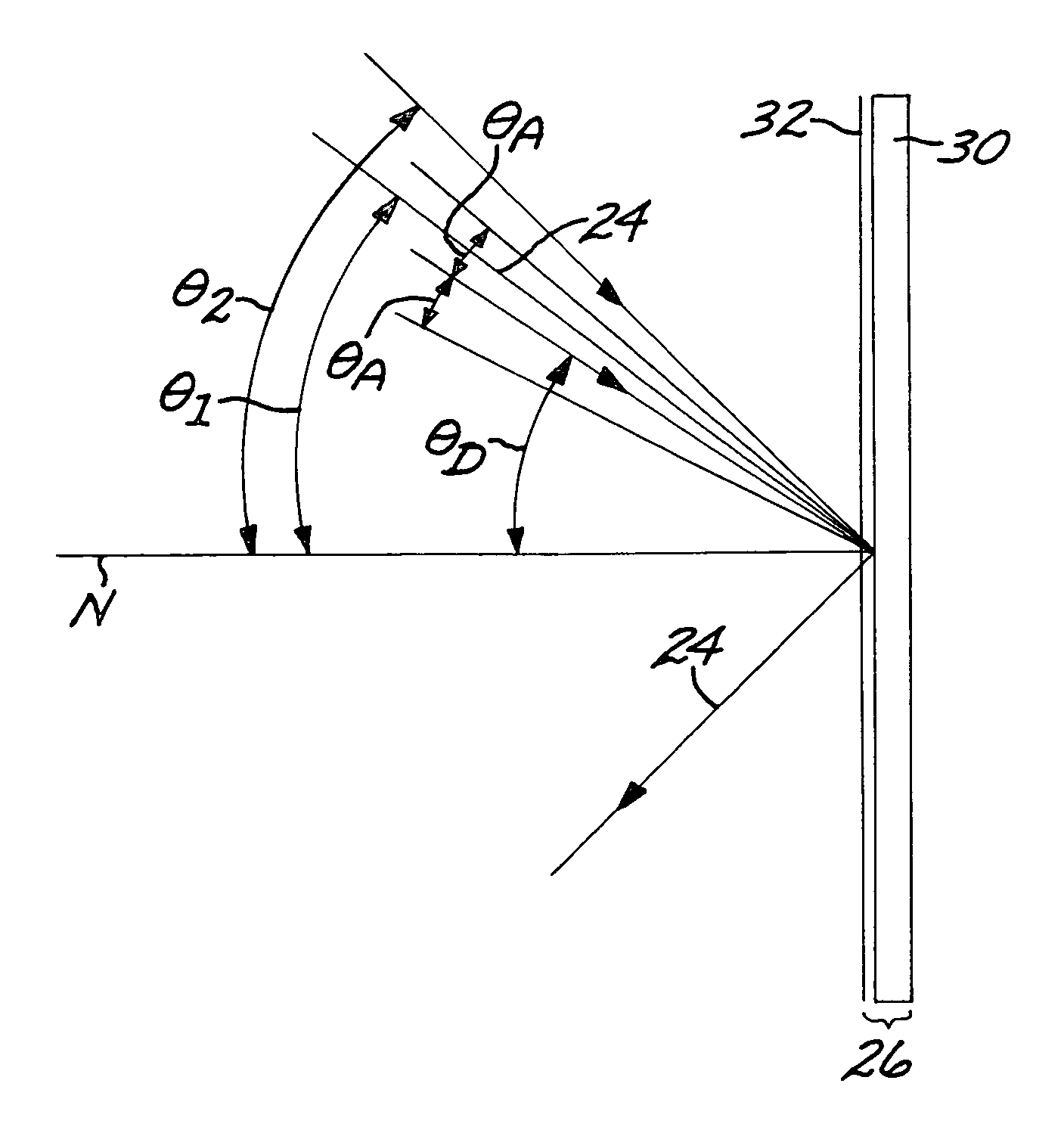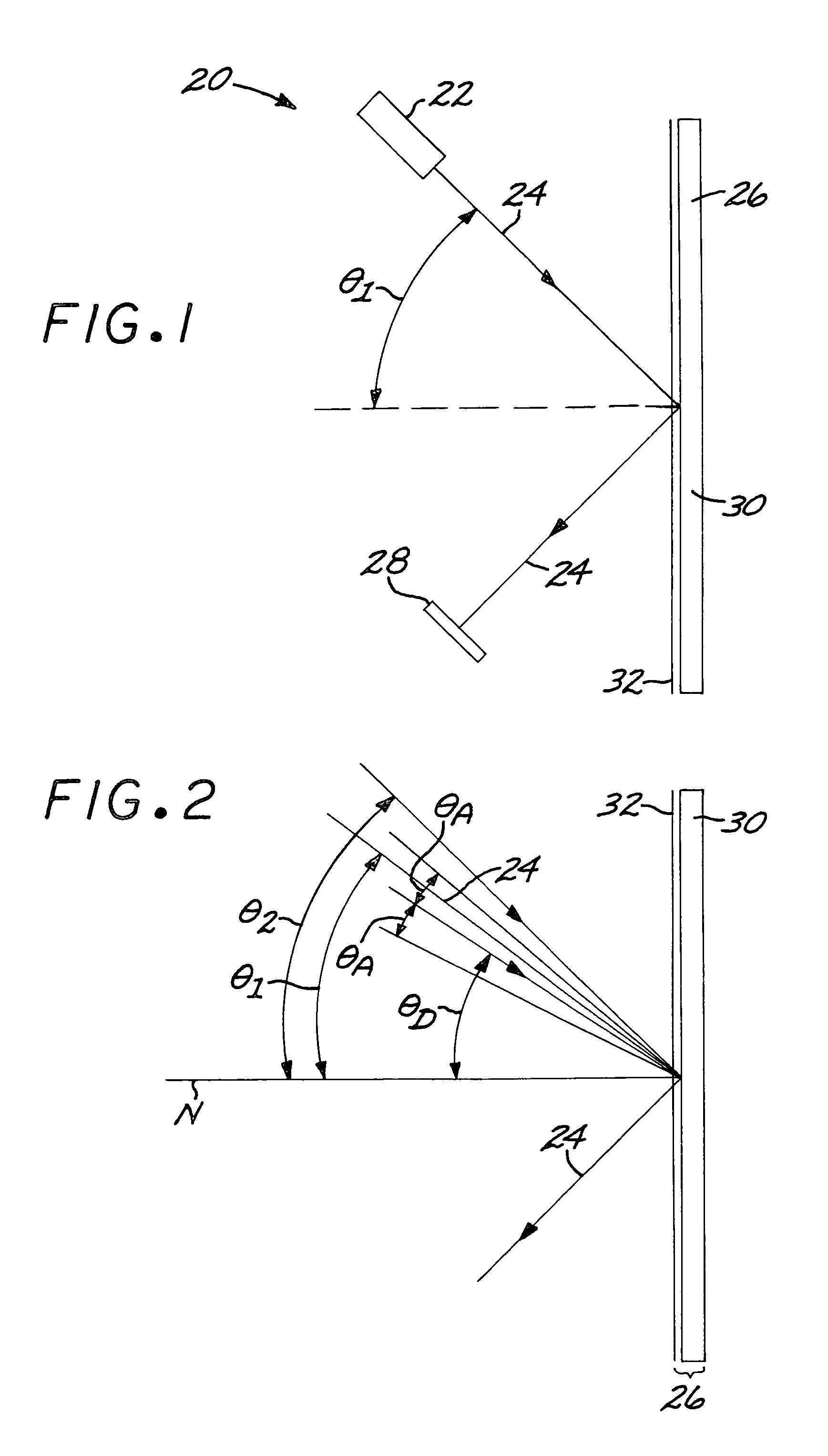Optical system with reflection-angle-selective mirror
a mirror and optical system technology, applied in the field of optical systems with reflection-angle selective mirrors, can solve the problems of stray light rays reflected from the mirror, lack of perfect collimation of the incident primary beam, and stray light, so as to improve the signal-to-noise ratio and reduce the chance of damage to optical components
- Summary
- Abstract
- Description
- Claims
- Application Information
AI Technical Summary
Benefits of technology
Problems solved by technology
Method used
Image
Examples
Embodiment Construction
[0020]FIG. 1 depicts an optical system 20 comprising a light source 22 having as an output a primary beam 24 of light. The light source 22 may be of any type, with a visible or infrared laser being an example. The output beam of the light source, which is the primary beam 24, is incident upon and reflects from a reflection-angle-selective mirror 26 to a detector 28. In practice, optical systems 20 usually have more and / or different optical elements in addition to the reflection-angle-selective mirror 26, but these illustrated optical elements are sufficient to present the basic features of the invention.
[0021]The reflection-angle-selective mirror 26 includes a substrate 30 and a reflection-angle-selective coating structure 32 deposited upon the substrate 30. FIG. 2 illustrates the angular performance of the reflection-angle-selective mirror 26. The reflection-angle-selective coating structure 32 has a higher reflectance for light that is incident upon the reflection-angle-selective ...
PUM
 Login to View More
Login to View More Abstract
Description
Claims
Application Information
 Login to View More
Login to View More - R&D
- Intellectual Property
- Life Sciences
- Materials
- Tech Scout
- Unparalleled Data Quality
- Higher Quality Content
- 60% Fewer Hallucinations
Browse by: Latest US Patents, China's latest patents, Technical Efficacy Thesaurus, Application Domain, Technology Topic, Popular Technical Reports.
© 2025 PatSnap. All rights reserved.Legal|Privacy policy|Modern Slavery Act Transparency Statement|Sitemap|About US| Contact US: help@patsnap.com



